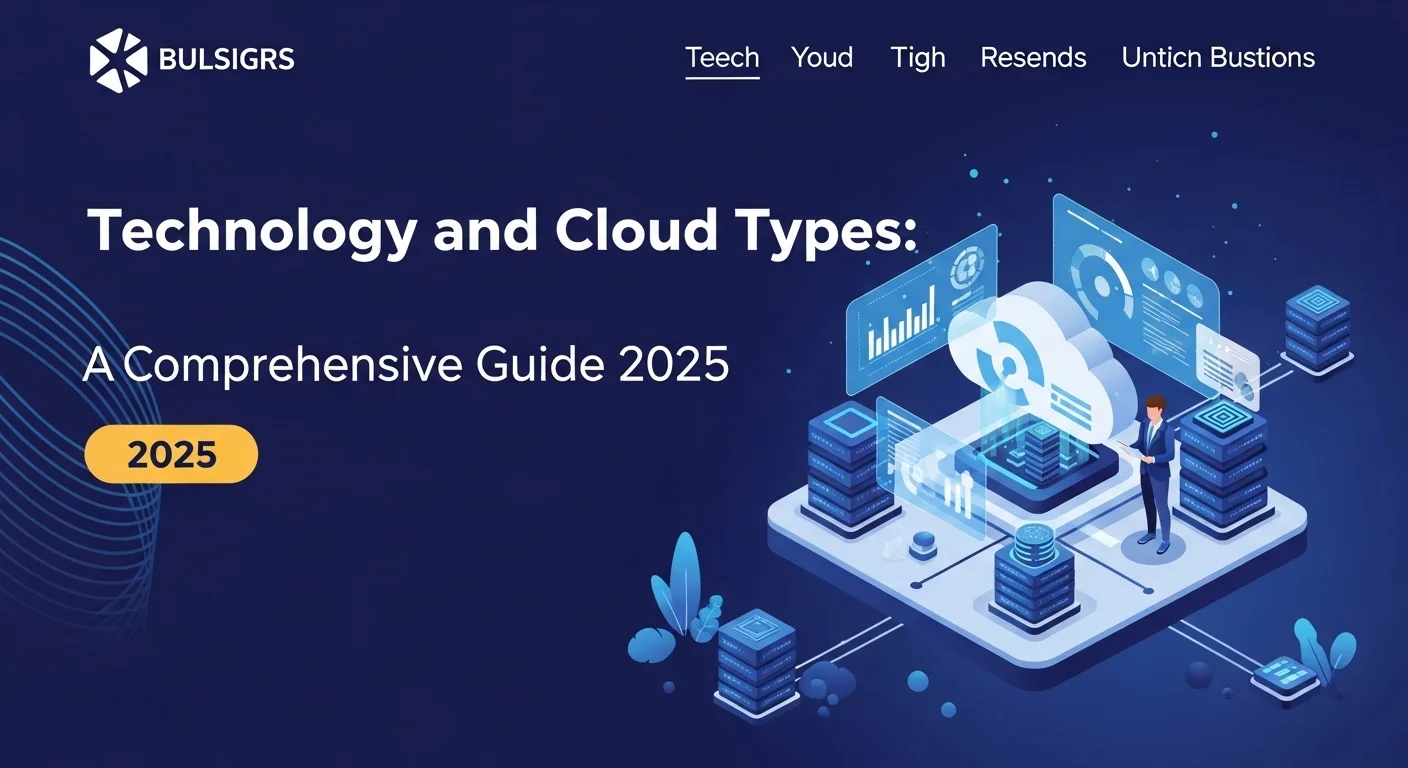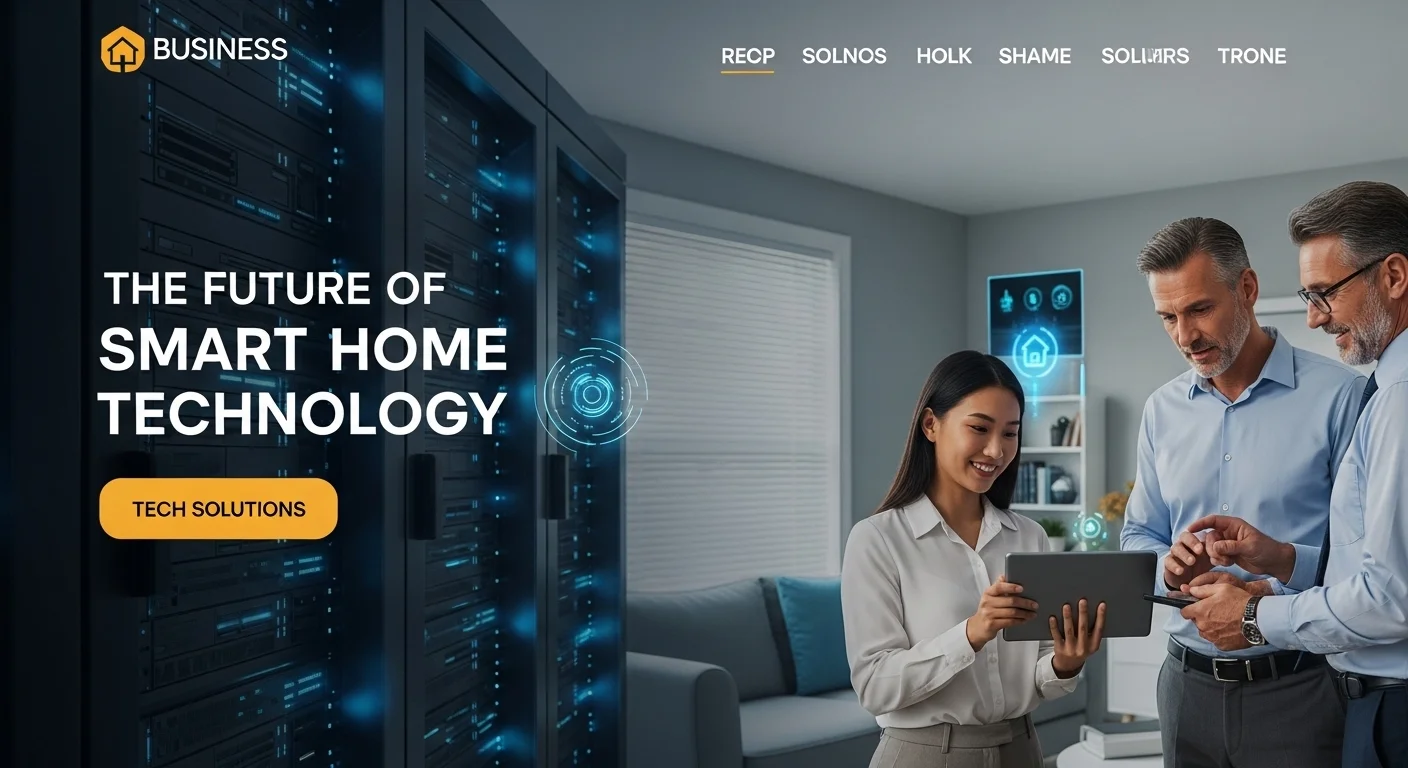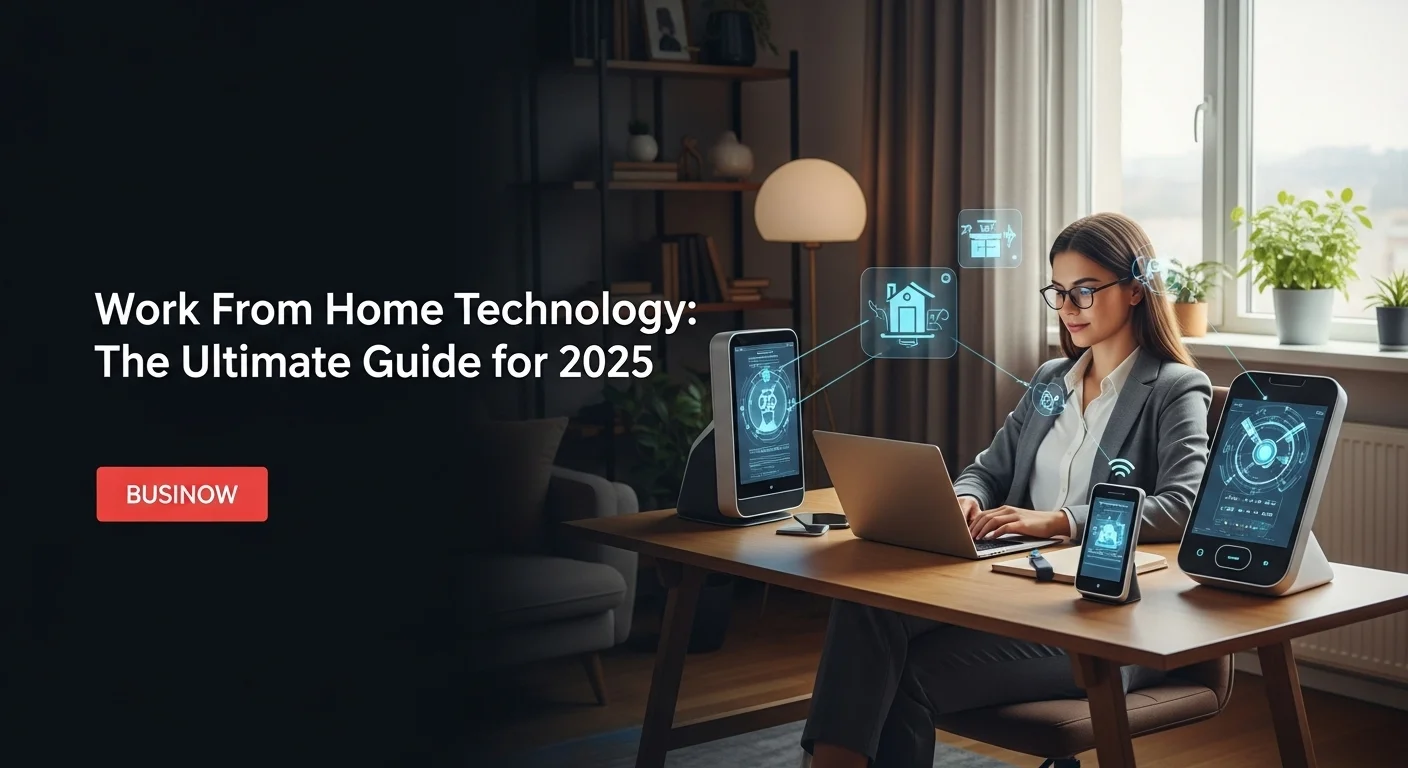Cloud Types Explained: Your Guide to Choosing the Right Cloud in 2025

Executive Summary
Navigating the world of cloud technology can feel like learning a new language. With terms like 'IaaS,' 'PaaS,' 'public,' and 'hybrid' being used constantly, it's easy to feel a bit lost. I've spent over a decade guiding businesses through this landscape, helping them see past the jargon and find solutions that truly work. This guide is my way of breaking it all down for you. We'll explore the fundamental cloud models—Public, Private, and Hybrid—and clarify the services they offer, from Infrastructure as a Service (IaaS) to Software as a Service (SaaS). My goal is to give you the confidence to make smart decisions about your technology, whether you're looking at different cloud environments, server types, or integration methods. Understanding these core concepts is the first step to leveraging the cloud to cut costs, improve security, and reach your goals.
Table of Contents
What are Cloud Types and Why Do They Matter?
In my years as a solutions architect, I've seen 'the cloud' go from a buzzword to the absolute backbone of modern business. Simply put, cloud computing is like renting access to a massive, powerful computer over the internet instead of buying and maintaining your own. This simple shift, offered by providers like Amazon Web Services (AWS), Google Cloud, and Microsoft Azure, has changed everything. It allows a small startup to use the same world-class infrastructure as a global corporation, fueling incredible innovation. Instead of spending a fortune on physical servers, businesses can now access storage, databases, and software on demand. This is why everything from your banking app to your favorite streaming service runs on the cloud—it's agile, scalable, and frees you up to focus on what you do best.
But not all clouds are the same, and that's where understanding Cloud Types becomes so important. Think of it like this: you've decided to move, but where? And how much work do you want to do yourself? These choices are broken down into two main categories: deployment models and service models. Deployment models are about *where* your cloud lives. Is it in a public space shared with others (Public Cloud), a private, exclusive property (Private Cloud), or a mix of both (Hybrid Cloud)? Service models are about *how much* is done for you. Do you just want the raw land and utilities (Infrastructure as a Service - IaaS), a foundation and framework to build on (Platform as a Service - PaaS), or a fully-furnished, move-in-ready home (Software as a Service - SaaS)? Your choice here will define your costs, control, security, and flexibility. Getting this right is one of the most critical strategic decisions a modern business can make.
Exploring Cloud Deployment Models
The first big decision you'll make is choosing the right deployment model. This determines who manages the infrastructure and how you access it.
Public Cloud
The Public Cloud is the most common starting point for many businesses, and for good reason. Here, a third-party provider like AWS or Azure owns and operates all the hardware, and you access what you need over the internet. You're sharing the provider's massive infrastructure with other customers, or 'tenants.' The biggest wins here are cost and scale. There are no huge upfront hardware costs; you just pay for what you use, which is a game-changer for businesses watching their budget. Plus, you can scale up your resources in minutes to handle a traffic spike and scale back down just as easily. The trade-off? Because it's a shared environment, some companies in highly regulated fields like finance or healthcare worry about security and compliance, as you have less direct control over the physical hardware.
Private Cloud
A Private Cloud is the opposite: it's a cloud environment dedicated entirely to your organization. You're not sharing resources with anyone. This can be hosted in your own data center or by a third party, but the key is that it's all yours. The main reason companies go this route is for maximum control and security. If you handle highly sensitive data or have strict regulatory requirements like HIPAA, a private cloud gives you the oversight you need. I've worked with many financial institutions that wouldn't have it any other way. However, this control comes at a price. A private cloud requires a significant investment in hardware and the IT expertise to manage it, making it a more expensive option upfront.
Hybrid Cloud
The Hybrid Cloud offers a 'best of both worlds' approach by connecting a private cloud with a public cloud. This lets you keep your most sensitive data and critical applications secure in your private environment while using the public cloud for tasks that need immense scale or are less sensitive. A classic example I've implemented is 'cloud bursting.' An e-commerce site might run its day-to-day operations on its private cloud, but during a huge Black Friday sale, it 'bursts' into the public cloud to handle the massive influx of shoppers without crashing. It’s incredibly flexible, but it's also the most complex model to manage. You need the right tools and skills to make sure the two environments work together seamlessly and securely.
Understanding Service Models: IaaS, PaaS, and SaaS
Once you've decided where your cloud will live, you need to decide what kind of service you need. This is all about how much management you want to handle yourself.
Infrastructure as a Service (IaaS)
IaaS is the most foundational service. It's like leasing the raw ingredients of computing: virtual servers, networking, and storage. You get the fundamental building blocks, but you're responsible for managing everything on top of them, including the operating system, middleware, and your applications. IaaS gives you the most control, which is fantastic if you have specific requirements or want to migrate a legacy application to the cloud without rebuilding it. It's a popular choice for tech-savvy startups and large enterprises that want the flexibility of the cloud without giving up control over their software environment.
Platform as a Service (PaaS)
PaaS takes things one step further. The provider manages not only the infrastructure but also the operating system, databases, and development tools. This creates a ready-made platform where your developers can just focus on what they do best: writing code and building applications. I've seen PaaS dramatically accelerate development cycles because it removes all the headaches of managing the underlying environment. Tools like Heroku or Google App Engine let development teams collaborate and deploy new features faster than ever before. It's the perfect middle ground for companies that want to build custom applications without managing the full infrastructure stack.
Software as a Service (SaaS)
SaaS is the model most of us use every single day, often without even thinking about it. It's a fully-baked software application that you access over the internet, usually on a subscription basis. Think Gmail, Salesforce, or Slack. With SaaS, the provider handles everything—the software, the infrastructure, maintenance, and updates. You just log in and use it. For businesses, this is the simplest and often most cost-effective way to get access to powerful tools without any of the burdens of installation or management. It's no wonder SaaS has become the default model for so many business applications today.

The Complete Playbook for Cloud Technology and Business Solutions
To truly master the cloud, you have to go deeper than the basic definitions. It’s about understanding the subtle differences between advanced models, knowing which server type to use for which job, and seeing how all these pieces fit together to solve real business problems. From my experience, the companies that succeed are the ones that don't just 'use' the cloud, but strategically engineer it. This means making deliberate choices about cloud environment types and knowing when a VM is better than a container. It means being able to connect different services with smart types of cloud integration to create a system that’s more than the sum of its parts. This part of the guide is for those who are ready to move beyond the basics and build a real competitive advantage with technology.
Advanced Deployment Models: Multi-Cloud and Community Cloud
As businesses get more sophisticated, so do their cloud strategies. The three basic models have given rise to more specialized approaches.
Multi-Cloud
A multi-cloud strategy means using services from more than one public cloud provider. It's not the same as hybrid cloud. In a multi-cloud setup, you might use AWS for its powerful computing, Google Cloud for its incredible AI and data analytics tools, and Azure for its seamless integration with Microsoft's enterprise software. The biggest reason for doing this is to avoid being locked into one vendor and to pick the absolute best tool for each specific job. I often see companies drift into multi-cloud by accident, but the smart ones do it on purpose. It also builds resilience—if one provider has an outage, you can shift workloads to another. The challenge? It's complex. Managing different security models, APIs, and billing systems requires serious skill and robust management tools to keep everything in sync.
Community Cloud
This is a more niche but important model. A Community Cloud is a collaborative cloud shared by several organizations with common goals or concerns, like security or compliance requirements. For instance, a group of research universities might build a community cloud to share large datasets and computing resources. Or a consortium of government agencies could use one to work on sensitive projects securely. It’s like a semi-private cloud that allows for cost-sharing and collaboration while maintaining a much higher level of security than a public cloud. It's a clever solution for industries where collaboration is key, but privacy is paramount.
A Deeper Look: Cloud Server Types
When we talk about a 'server' in the cloud, it's not always a physical box. It's an abstraction, and understanding the different forms it can take is crucial for optimizing both performance and cost.
Virtual Machines (VMs)
VMs are the classic workhorses of the cloud. A VM is a complete digital replica of a physical computer, running its own operating system on top of a physical server. This provides strong isolation between different VMs on the same hardware, which is great for security and for running older, 'legacy' applications that expect to have a whole machine to themselves. You have total control over the OS and software. The downside is that each VM carries the overhead of a full operating system, which makes them a bit heavier and slower to start up compared to newer options.
Containers
Containers are a more modern, lightweight approach. Instead of virtualizing the entire computer, containers virtualize the operating system. This allows many containers to run on a single machine, sharing the host’s OS kernel. Think of it like this: a VM is a full house, while a container is an apartment in a building. Each apartment is isolated, but they all share the building's core plumbing and electricity. Technologies like Docker and Kubernetes have made containers the go-to choice for building modern applications. They are incredibly fast, efficient, and portable, allowing you to run your application identically on a developer's laptop, a testing server, or in the production cloud.
Serverless Computing (Function-as-a-Service)
Serverless computing is the next evolution. The real 'aha' moment with serverless is when you realize you can stop thinking about servers entirely. You write your code in small, self-contained 'functions' and the cloud provider handles everything else—provisioning, managing, and scaling the infrastructure. Your function only runs when it's triggered by an event, like a user uploading a file. You pay only for the exact compute time you use, down to the millisecond. For applications with unpredictable traffic, like an IoT device backend or a data processing pipeline, this model is unbelievably cost-effective. It's a game-changer for building efficient, event-driven systems.
The World of Cloud Solutions
This powerful infrastructure unlocks a whole universe of ready-made types of cloud solutions that can transform a business.
- Big Data & Analytics: Cloud platforms like Google BigQuery or Amazon Redshift give you the power to analyze petabytes of data in seconds, revealing insights that were once only available to companies with supercomputers.
- AI & Machine Learning (ML): The cloud has made AI accessible to everyone. You can use pre-trained models for tasks like image recognition or build, train, and deploy your own custom models with services like Amazon SageMaker, embedding intelligence into your products without needing a team of data scientists.
- Internet of Things (IoT): The cloud provides the backbone to connect and manage millions of IoT devices, from smart home gadgets to industrial sensors, making large-scale IoT applications possible.
- DevOps & Application Modernization: The cloud is the natural home for modern software development. Managed services for continuous integration/continuous deployment (CI/CD), infrastructure as code, and container orchestration help teams build and release software faster and more reliably than ever before.
Connecting Everything: Types of Cloud Integration
As your cloud footprint grows, connecting all the pieces becomes vital. Effective types of cloud integration ensure data flows where it's needed, creating a unified system.
- API-Based Integration: This is the modern standard. Applications talk to each other through well-defined Application Programming Interfaces (APIs), allowing for flexible and reusable connections.
- Event-Driven Integration: Instead of directly calling each other, services react to 'events.' For example, a 'new customer created' event can trigger actions in billing, marketing, and support systems simultaneously. This creates a more resilient and scalable architecture.
- Integration Platform as a Service (iPaaS): Think of this as a central hub for all your integrations. Platforms like MuleSoft or Dell Boomi provide tools, pre-built connectors, and automation to simplify the process of linking your various cloud and on-premise applications.
- Shared Database Integration: A less common but sometimes necessary pattern where multiple applications share a single database. It's simple but creates tight dependencies, so I generally advise using it only when absolutely necessary.
By thoughtfully combining advanced deployment models, the right cloud server types, powerful solutions, and robust integration strategies, you can build a technology stack that is truly optimized for performance, cost, and business impact.

Practical Tips and Strategies for Mastering Your Cloud Experience
Knowing the theory behind cloud types is one thing, but putting it into practice to get real results is another. Over my career, I've seen companies soar and stumble on their cloud journeys. The difference often comes down to strategy and execution. An effective cloud strategy isn't a one-time decision; it's a constant process of learning, adapting, and optimizing. This section is all about the practical advice I share with my clients—the lessons learned from real-world successes and failures. We'll cover how to choose the right model for your specific needs, keep costs from spiraling out of control, and build a secure and future-proof cloud environment. This is about making smart, strategic decisions about your cloud environment types, cloud server types, and the solutions you choose to build on them.
Best Practices for Choosing the Right Cloud Model
This is the foundation of your entire strategy. My first piece of advice is always this: don't choose a model based on what's trendy. Base it on a clear-eyed assessment of your business.
- Analyze Your Workloads: Every application has a different personality. A customer-facing website that needs to handle sudden traffic spikes is a perfect fit for the public cloud. Your sensitive, mission-critical financial database, however, might belong in a private cloud. Look at each workload's unique needs for performance, security, and compliance before deciding where it should live.
- Calculate the Total Cost of Ownership (TCO): The cloud's 'pay-as-you-go' promise can easily become 'pay for what you forgot to turn off.' Look beyond the monthly bill. Factor in costs like data transfer fees (which can be surprisingly high), management tools, and specialized staff. A private cloud has high upfront costs, but for a stable, predictable workload, it can be cheaper in the long run. Use the TCO calculators from the major vendors as a starting point.
- Prioritize Security and Compliance: If you're in an industry like healthcare (HIPAA) or finance (PCI DSS), this is non-negotiable. A private or hybrid cloud often provides the granular control needed to meet these strict rules. If you use a public cloud, make sure you understand the 'shared responsibility model'—the provider secures the cloud itself, but you are always responsible for securing what you put in it.
- Plan for Future Growth: Your business isn't static, and your cloud shouldn't be either. Choose a model that gives you room to grow. The public cloud offers near-infinite scalability on demand. A hybrid approach gives you the flexibility to tap into that scale when you need it, without having to overbuild your private infrastructure for a once-a-year event.
Keeping Your Cloud Costs in Check
I've seen cloud bills that would make your eyes water, almost always from easily avoidable mistakes. Proactive cost management is not optional.
- Right-Size Everything: The most common money pit is over-provisioning—paying for more capacity than you need. Constantly monitor your resource usage. If a virtual machine is only using 10% of its CPU, shrink it! Turn off idle resources. It sounds simple, but it saves a fortune.
- Commit and Save: If you have workloads that run 24/7, on-demand pricing is throwing money away. Use Reserved Instances or Savings Plans. By committing to one or three years of usage, you can slash your costs by up to 70%. It's the single biggest cost-saving lever you can pull.
- Automate Shutdowns: Your development and testing environments don't need to run overnight or on weekends. Use simple automation scripts to shut them down outside of business hours. This alone can cut your non-production costs in half.
- Use the Provider's Tools: All the major cloud providers give you powerful cost management dashboards for free. Use them. Set budgets, create alerts, and analyze your spending regularly. You can't control what you don't measure.
Advanced Strategies for a Secure and Integrated Cloud
As your environment grows, so do the challenges. Building a truly resilient system requires moving beyond the basics.
Adopt a Zero Trust Security Mindset
The old 'castle and moat' security model, where everything inside the network was trusted, is dead. With the cloud, your network has no walls. The new rule is 'never trust, always verify.' This means every single request to access a resource must be authenticated and authorized, regardless of where it comes from. Implementing a Zero Trust architecture across all your cloud environment types dramatically reduces your attack surface and contains the damage if a breach does occur.
Build a Smart Integration Fabric
In a multi-cloud world, you can't have your applications living on isolated islands. Instead of messy point-to-point connections, I advise using an Integration Platform as a Service (iPaaS). This gives you a central control plane to manage how all your applications talk to each other, using reusable APIs and pre-built connectors. For dynamic systems, consider an event-driven architecture. This decouples your applications, so a failure in one service doesn't bring down the entire system, making everything more resilient and scalable.
Looking Ahead: The Future of the Cloud
The cloud never stands still. Staying competitive means keeping an eye on what's next.
- AI-Powered Everything: AI is being woven into the fabric of the cloud. From AIOps that predict and prevent IT issues to security tools that use machine learning to detect threats in real-time, AI is making the cloud smarter and more autonomous.
- The Shift to the Edge: For applications like autonomous vehicles or augmented reality, a round trip to a distant data center is too slow. Edge computing brings processing power closer to where data is created. Hybrid cloud models are perfectly positioned to manage this interplay between the central cloud and the intelligent edge.
- A Focus on Sustainability: Data centers consume enormous amounts of energy. The major cloud providers are leading the charge in building green data centers powered by renewable energy. Choosing a provider with a strong commitment to sustainability is not just good for the planet; it's good for your brand. Publications like the MIT Technology Review often cover these exciting innovations.
By thoughtfully combining advanced deployment models, the right cloud server types, powerful solutions, and robust integration strategies, you can build a technology stack that is truly optimized for performance, cost, and business impact.
Expert Reviews & Testimonials
Sarah Johnson, Business Owner ⭐⭐⭐
This was a good overview of cloud types. As a small business owner, I would have loved a few more real-world case studies on how a company like mine can choose between a private or public cloud.
Mike Chen, IT Consultant ⭐⭐⭐⭐
Solid article on cloud technologies. It clarified the difference between IaaS and PaaS for me, which I was struggling with. Some of the multi-cloud integration concepts were a bit advanced, but the core explanations were spot-on.
Emma Davis, Tech Expert ⭐⭐⭐⭐⭐
Finally, an article that explains it all in one place! As a developer, I found the breakdown of VMs vs. Containers vs. Serverless incredibly helpful. It's comprehensive and easy to follow. I've already shared it with my team.



